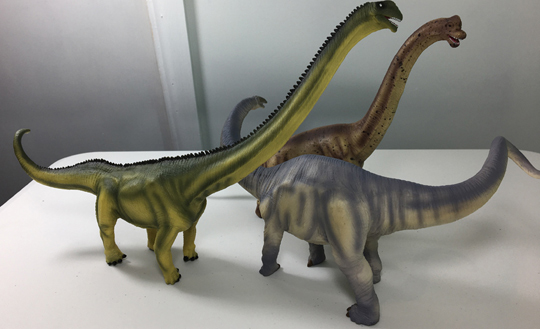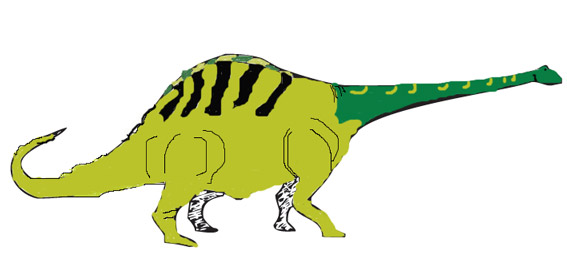Giant Sauropod Trackways Discovered in Eastern France
Dinosaur trackways and footprints are known as trace fossils. These fossils preserve evidence of the activities of dinosaurs and the unearthing of giant sauropod tracks that are 150 million years old is being heralded by scientists as a “unique discovery”. Body fossils can be transported long distances and deposited away from the region where the animal actually lived. With trace fossils, such as these amazing dinosaur footprints, you can actually walk where a dinosaur walked 150 million years ago. Now that’s what we call “Walking with Dinosaurs”.
Giant Sauropod
The newly discovered trackways are being claimed as the largest footprints ever found. Some prints exceed 1.5 metres in diameter. The trackways are believed to extend perhaps for several hundred metres, providing scientists with a unique opportunity to study sauropod locomotion over such a large distance.
These huge dinosaur tracks were made by giant sauropods of an unknown genus, the site is located near the French village of Plagne on the Jura plateau, north-east of the city of Lyon and not far from the Swiss border. It is from these rock formations that the geological period known as the Jurassic is named.
The huge footprints were uncovered as the clearing of woodland led to the erosion of surface soil. The tracks, which resemble a series of craters were formed when heavy sauropods walked over calcified sand, their weight compressing the ground and pushing up large ridges of sediment surrounding each print. This area was then quickly covered by another layer of sandy mud and the preservation process was started. During the Late Jurassic this area was a beach, adjacent to a warm shallow sea. It seems that sauropods enjoyed a trip to the seaside as much as we do.
The trackways were found in April by a pair of amateur fossil hunters, Marié-Hèlene Marcaud, a teacher, and Patrice Landry, a geologist, during one of their regular expeditions with the Naturalists’ Society of Oyonnax. Aware of the significance of their discovery, the pair contacted scientists at the National Centre of Scientific Research (CNRS) to confirm the authenticity of the prints.

Three new sauropods from Mojo Fun a trio of fantastic sauropod models. Picture credit: Everything Dinosaur.
Picture credit: Everything Dinosaur
The trio of sauropod replicas (above) are from the: Mojo Fun prehistoric and extinct model range.
Making a Statement
In a statement from the CNRS, the footprints appear to be the largest dinosaur footprints known, making them the biggest footprints ever found. The exceptional length of the trackways will provide palaeontologists with the opportunity to study the walking habits of dinosaurs over an extraordinary distance, trackways in excess of fifty metres are very rare, these tracks may extend over hundreds of metres in length.
Michel Mazin, a researcher with the Lyon University based CNRS stated:
“This is a colossal find with global repercussions. The prints are very big reaching 1.2 to 1.5 metres across, which corresponds to animals exceeding 30-40 tonnes in weight and measuring more than 25 metres in length”.
Researchers hope to exhume several thousand more prints based on one or several trails, which would allow them to estimate how many dinosaurs passed through the region. The goal is also to find out what the dinosaurs were doing on this trail.
An Illustration of a Late Jurassic Sauropod (Apatosaurus)

Picture credit: Everything Dinosaur
It is possible that the prints may reveal characteristics of herding behaviour, perhaps indicating how these large, herbivorous dinosaurs travelled in groups. It is a mystery what these animals were doing traversing a beach, there would have been little food on the shoreline for them to eat. It has been speculated that these sorts of dinosaurs had to travel great distances to find enough food to sustain their huge bulk. It may have been easier for them to cross the sandy beach rather than have to try to force their way through woodland and scrub.






Leave A Comment